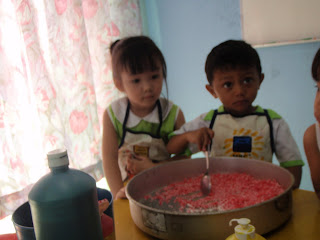1. Through experiences with picture books the young child can develop socially, personally, intellectually, culturally, and aesthetically.
2. Books enable the newly socialized child to explore interpersonal relationships and human motives.
3. Picture books communicate self-acceptance, and they model coping strategies for children who are just learning to deal with powerful emotions.
4. Through picture books, children meet families, settings, and cultures that are in some ways similar and in some ways different from their own.
As a result, picture books contribute to the child’s cultural identity and multicultural awareness.
2. Books enable the newly socialized child to explore interpersonal relationships and human motives.
3. Picture books communicate self-acceptance, and they model coping strategies for children who are just learning to deal with powerful emotions.
4. Through picture books, children meet families, settings, and cultures that are in some ways similar and in some ways different from their own.
As a result, picture books contribute to the child’s cultural identity and multicultural awareness.
Tips
for improving your child's reading ability:
1.
Read with and to your child everyday.
2. Teach them how to read slowly by first teaching them their name and helping them recognize that letters form a word.
3. Be patient.
4. Play with them, play catch, go to the park, and say the names of things as you go along.
5. Sing often with your child.
6. Read in front of your child. Children love to imitate their parents.
7. Let them choose the books they want to read with you.
8. As you read with your children, first read the sentences, and ask them to repeat after you.
9. Praise your child for their progress, even a little praise goes along way.
2. Teach them how to read slowly by first teaching them their name and helping them recognize that letters form a word.
3. Be patient.
4. Play with them, play catch, go to the park, and say the names of things as you go along.
5. Sing often with your child.
6. Read in front of your child. Children love to imitate their parents.
7. Let them choose the books they want to read with you.
8. As you read with your children, first read the sentences, and ask them to repeat after you.
9. Praise your child for their progress, even a little praise goes along way.
After three months, we can see children are excited about the picture book! Let's continue to read!
My first picture book!
This book is interesting!
Every one can read a picture book!
This my selection for this week!
I am reading!





















